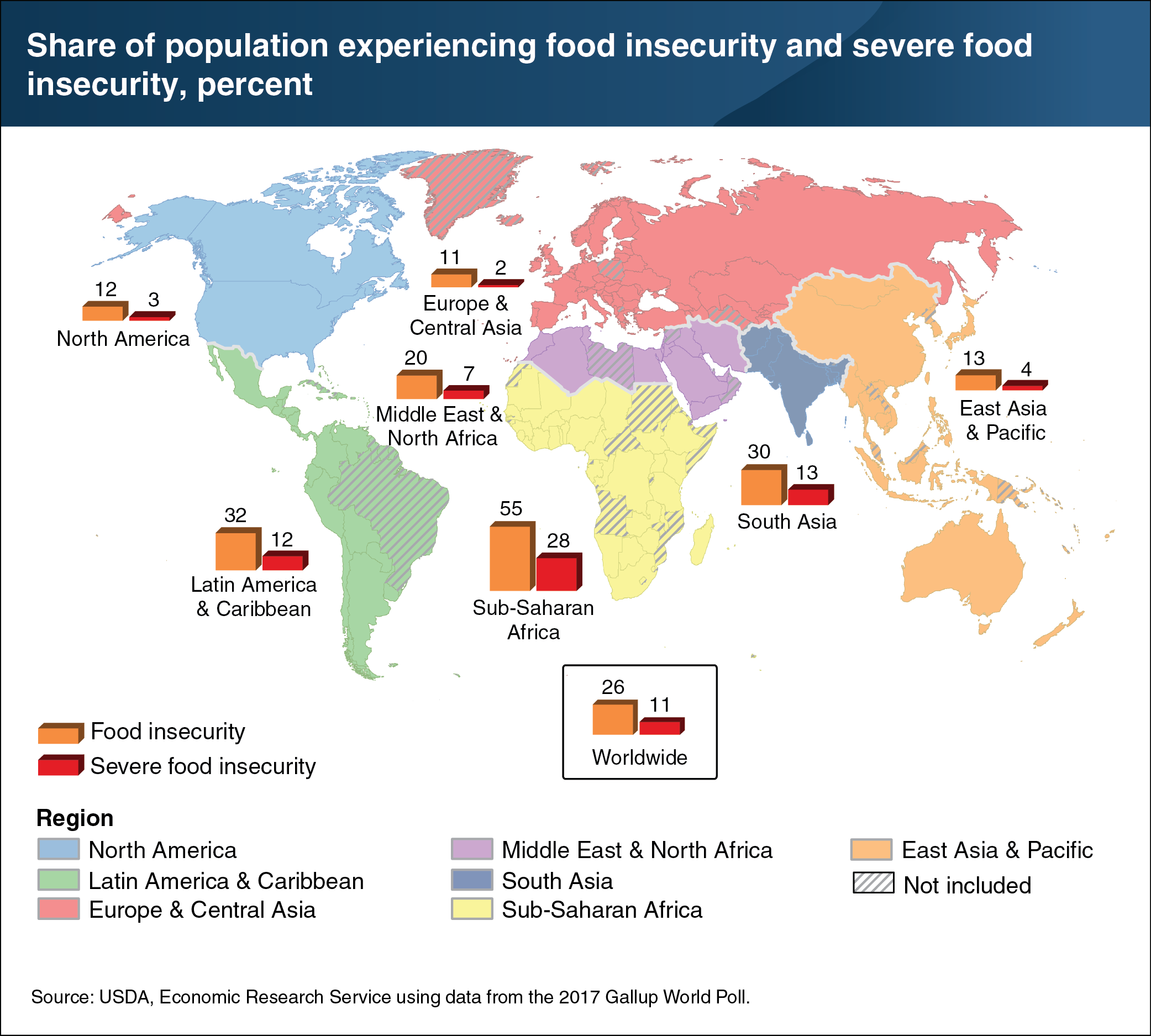Food insecurity rates highest in Sub-Saharan Africa
- by Michael D. Smith
- 6/26/2019

Food insecurity—the lack of access to sufficient, safe, and nutritious food—exists at some level in every country. In 2014, the Food and Agriculture Organization of the United Nations created the Food Insecurity Experience Scale (FIES) based on responses to a series of survey questions to provide a standardized measure of people’s direct experiences of food insecurity. The measure can be used to track food insecurity around the world and identify risk factors. FIES data from 2017 show significant variations across global regions in the prevalence of food insecurity and severe food insecurity. Severe food insecurity is the most extreme range of food insecurity and generally corresponds to hunger. In 2017, Sub-Saharan Africa had the highest prevalence of food insecurity (55 percent) and severe food insecurity (28 percent), followed by Latin America and the Caribbean (32 percent food insecure and 12 percent severely food insecure), and South Asia (30 percent and 13 percent, respectively). Food insecurity and severe food insecurity were lowest in North America and Eastern Europe and Central Asia. This chart appears in “Who Are the World’s Food Insecure? Identifying the Risk Factors of Food Insecurity Around the World” in the June 2019 edition of ERS’s Amber Waves magazine.


